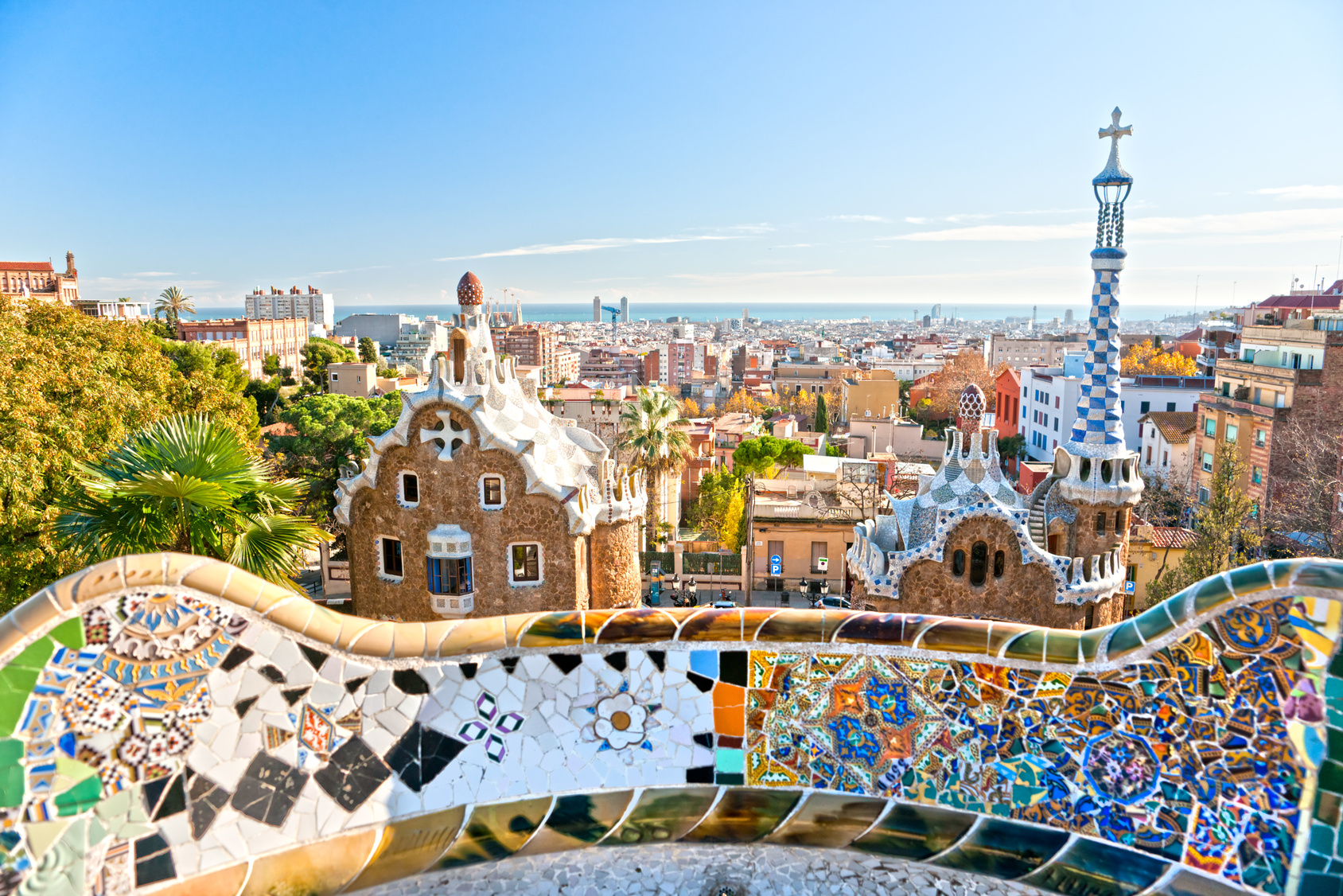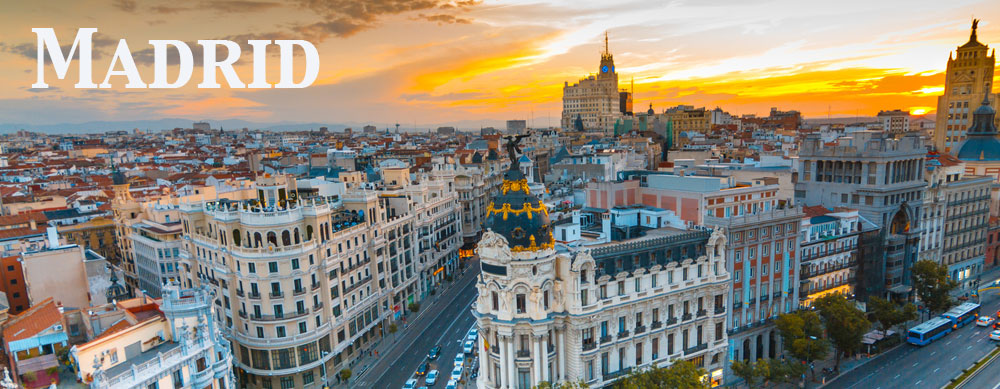
Madridista
Luxury royal Madrid is one of the centers of European tourism. Millions of foreigners visit the city every year. The Spanish capital began to develop after climbing the throne of the Bourbon dynasty in the 16th century. Then magnificent churches and palaces began to be built, monuments to the heroes of the nation were erected.
Walking around the Plaza Mayor and tasting tapas in the central market of San Miguel, you can feel the spirit of Madrid - a strict, solemn and at the same time dynamic and looking to the future. The former greatness of the Spanish nation is carefully preserved in the treasures of the Prado Museum, sealed in the walls of Palacio Real Palace, immured in the stone pavement of Plaza del Sol.
A trip to the Spanish capital is a journey into the world of art, graceful architecture and breathtaking gastronomy, and immersion in a vibrant and authentic culture.
1. The Royal Palace
This Spanish "Versailles", one of the most beautiful royal palaces in Europe, built in the XVII century. On the west side of the complex are the magnificent gardens of Campo del Moro. During the reign of the dictator Franco, the palace was nationalized, so the royal family does not live here anymore, but only arranges formal receptions. The rest of the time the building is open to tourists.

2. The Palace and the Cibeles Fountain
One of the main squares of the Spanish capital is the Plaza de Cibeles. There is a monumental fountain of the 18th century and a palace built in the early 20th century. Since 2007, the building is the residence of the mayor of the city. In the past centuries, the townspeople took drinking water from the fountain, and the palace building throughout the 20th century served as the main post office. Today, Plaza de Cibeles is a popular destination for tourists and residents of Madrid.
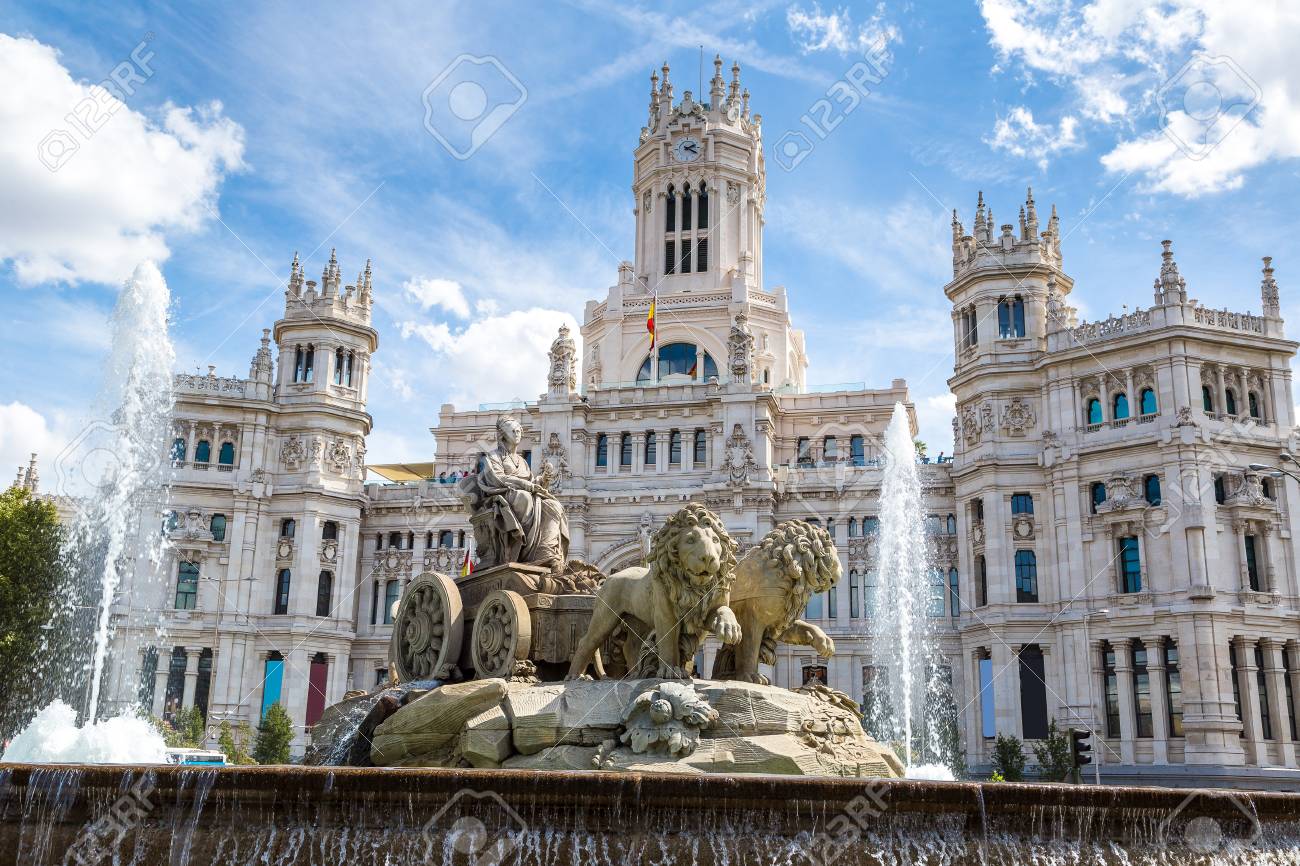
3. "The Gate of Europe"
Two skyscrapers-towers in the Plaza de Castille, built at an inclination of 15 ° to the surface of the base. The buildings were built according to the design of American architects D. Berge and F. Johnson in 1996. In the height of the tower reach 114 meters and accommodate 25 floors, on the roofs are private helicopter pads. This landmark became a symbol of modern Madrid.

4. Gran Vía Street
One of the main highways of the capital, as well as the main "promenade" for local residents. In the evenings, especially on weekends, hundreds of citizens come here to the famous Spanish "march" - a long walk from the bar to the bar (these establishments on the Gran Via are in abundance), during which you can chat, meet friends, drink a glass of wine and merge into a cheerful a crowd of other idle talkers.

5. Area of the Plaza Mayor
The central square of Madrid, from where most of the famous tourist routes start. The Plaza Mayor appeared in the 17th century during the reign of Philip III. Since then, important state events have taken place here: executions, bullfighting, the coronation of Spanish kings, public holidays and menacing courts of the Inquisition. Nowadays street artists, artists and curious onlookers gather in the square.
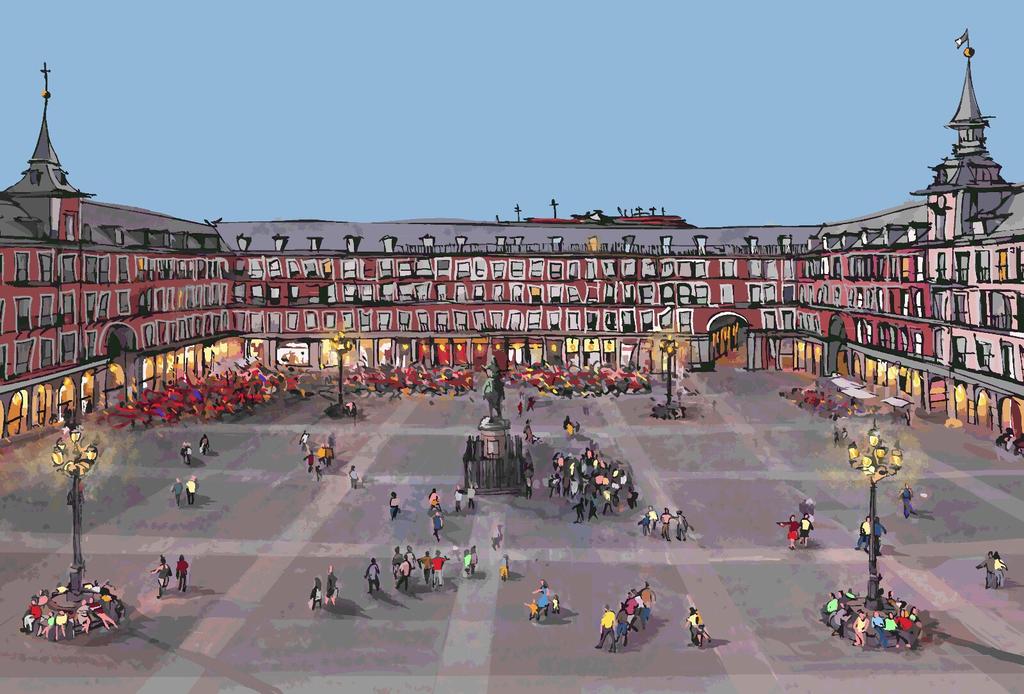
6. The Puerta del Sol area
The name of the place is translated from Spanish as the "gate of the sun". Here is the famous symbol of Madrid - a bear supporting the strawberry tree. In the middle of the square is a monument to Charles III. The Puerta del Sol is always full of people. Here, the sellers of the Christmas lottery are lost in groups of Chinese tourists with huge cameras, and shopaholics run from one store to another in search of discounts.
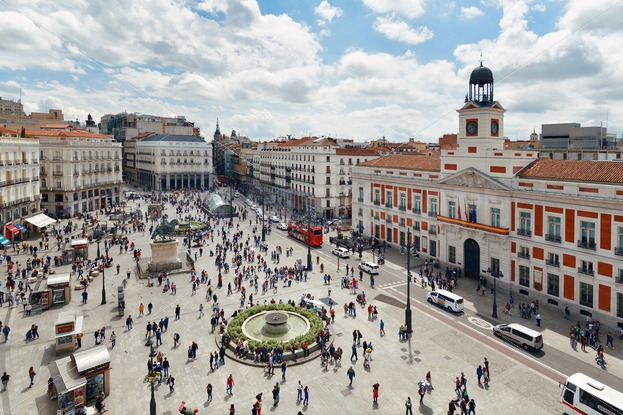
7. Park Buen Retiro
Green territory in the city, a favorite place for walks of Madrid. In the park there are many picturesque avenues, fountains, buildings of past centuries. The townspeople come here whole families on weekends to eat ice cream or take a boat ride on a small lake. In Spanish, the name of the park sounds like "good privacy".
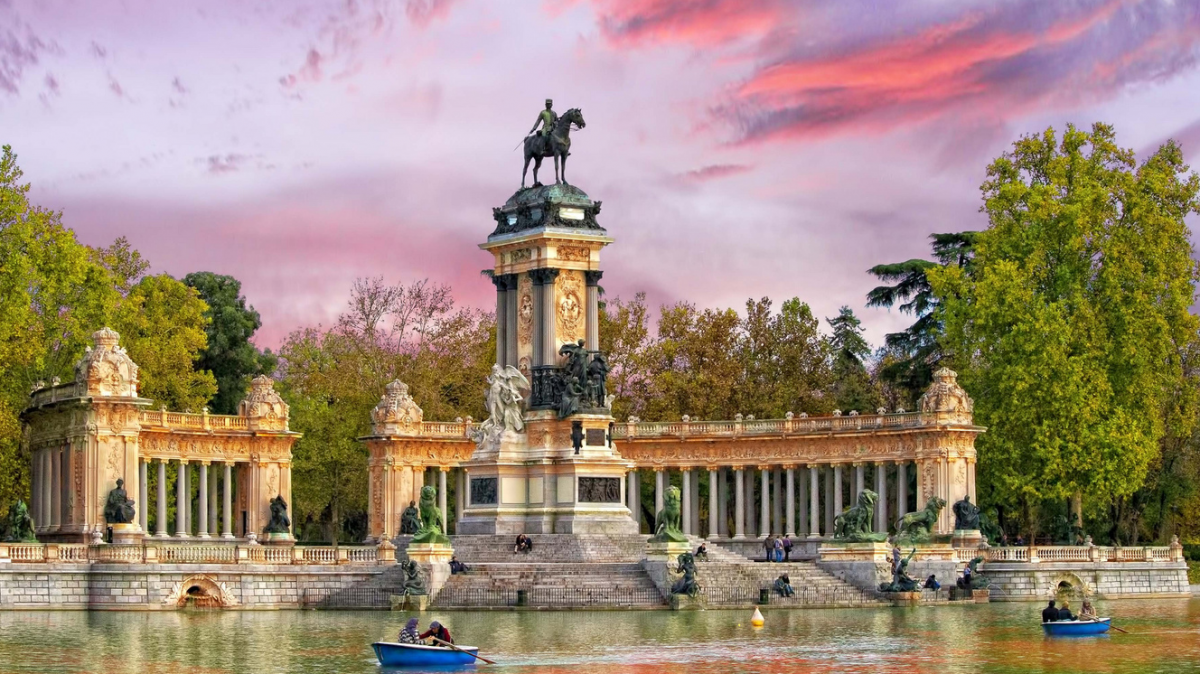
8. Casa de Campo Park
An extensive park area, somewhat remote from the central neighborhoods of Madrid. In the past, there were royal hunting grounds. The park has a large zoo with an aquarium and dolphins, as well as an area of attractions with dozens of slides, mazes and other carousels. Also for the hungry visitors there is a whole street of restaurants Paseo de Gastronomy.
9. The Prado Museum
A priceless collection of works of art, at a price superior even to the Louvre of Paris. Here outstanding representatives of Spanish painting are exhibited: Velázquez, Goya, El Greco Murillo. The Prado Museum owns extensive collections of Italian painters and canvases by the masters of the Flemish school. For public viewing the exposition was opened in 1819.
10. Queen Sofia Arts Center
Included in the "golden" three of the art galleries of the Spanish capital, along with the museums of Thyssen-Bornemisza and Prado. The exposition was opened in 1992. in the former building of the capital's hospital. The Arts Center was named after the Spanish Queen Sofia. The place is famous for its rich collection of contemporary art. The most notable painting - "Guernica" brush grandiose Pablo Picasso.
11. The Thyssen-Bornemisza Museum
Until 1993, the museum was a private collection of the Thyssen-Bornemisza family, then it was bought by the state. Here are paintings by artists, who were "overlooked" in the Prado and the Center of the Arts of Queen Sofia. On a regular basis the works of Italian primitivists, Russian constructivists, Dutch and English painters are exhibited. Also there are many masterpieces in the style of pop art and geometric abstraction.
12. Museum of America
Museum dedicated to the discovery of the American continent. In all of Europe, he will not find any analogues. Here are collections showing the history and life of the indigenous population of America before the Spanish conquest. Visitors can look at weapons, household items, clothes, religious items of Indian tribes. Also, arms of conquistadors and samples of colonial art are exhibited.
13. National Library of Spain
The largest in the country collection of written and printed exhibits: books, maps, engravings, brochures, magazines, musical scores, posters. The library appeared during the reign of King Philip II at the beginning of the XVIII century. The funds were constantly replenished by the provision of a copy of each printed work published in the country. Over three centuries of existence, the library has accumulated 26 million samples.
14. The Royal Theater
The main opera stage of the capital, exists since the middle of the XIX century. As a result of wars and revolutionary events, the theater repeatedly lost its functions and alternately served as a barracks, a warehouse, or a building for parliamentary sessions. In 1977, the scene was returned to its original function, in 1997, only operas and other musical works were staged here.
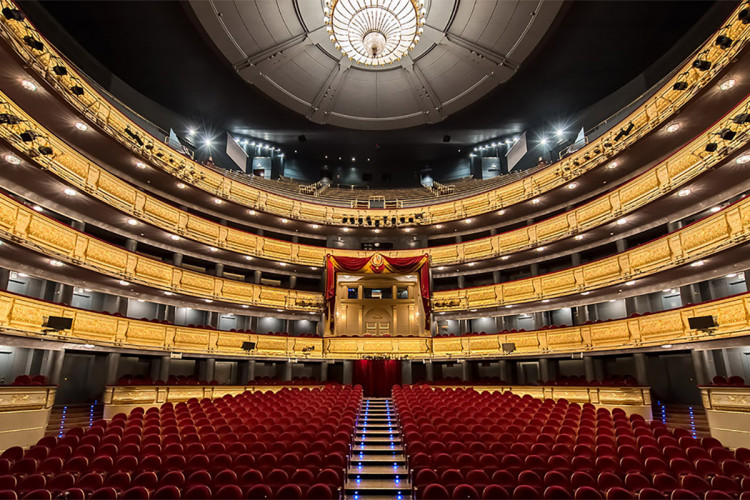
15. Almudena Cathedral
The temple is dedicated to the Virgin Mary of Almudena - the patron saint of the Spanish capital. The first stone in the foundation was laid by King Alfonso XII in 1884. The cathedral was finally completed only by the end of the XX century. The architecture of the building is a mixture of neo-classical and baroque elements.
16. The Monastery of El Escorial
The monastery is about an hour's drive from Madrid at the foot of the Sierra Nevada ridge. The severe fortress served as the residence of the Spanish kings. Construction continued from 1563 to 1584 years. Despite the strict and rather simple appearance, the interior decoration of the palace amazes with splendor and luxury. Here lies the ashes of all Spanish monarchs, beginning with Charles V.
17. Monastery of Descalzas Reales
An active monastery of the 16th century in the city of Madrid, located near the Puerta del Sol. The Abode gave shelter to women from noble families who ran under her arches from the hated and imposed relatives of the suitors. Thanks to the rich dowry of the failed brides, the monastery quickly became one of the richest in the whole of Europe. In one part of the monastery is a museum of painting.
18. The Temple of Debod
Ancient Egyptian temple, which is about 2000 years old. Initially intended to worship the god Amon, then became the center of the cult of the goddess Isis. The temple was presented to Spain by the Egyptian authorities as a token of gratitude for the salvation of the historical relics affected by the construction of the Aswan Dam. The construction was dismantled on stones, transported to Madrid and installed in the West Park.
19. Gate of Alcalá
Are located on Independence Square in the center of the capital. The design is made in neoclassical style, has three large and two small spans on the sides. The facade is decorated with a sculptural group and an inscription where the name of Charles III is immortalized. In the XVII century, through the gateway passed the road to Alcalá de Henares. The monument became one of the symbols of Madrid's modernization in the era of Charles III.
20. Atocha railway station
The main and largest railway station in Spain, from where high-speed trip to all regions of the country, as well as commuter trains depart. The building consists of two terminals. In the old terminal of the XIX century there is a tropical garden, cafes, shops and amusement facilities, the new one is used for the purpose of sending and arriving trains.
21. Arena Las Ventas
The arena, designed for the famous Spanish national show - bullfighting. From May to October, every Sunday there are bullfights, from April to November you can visit the bullfighting museum. Also, quite often the site is used for concerts and festivals. The structure appeared at the beginning of the XX century to replace the old building located in the center of the city.
22. Santiago Bernabéu Stadium
Home arena of the popular football club "Real Madrid". You can get to the stadium with an excursion, during which visitors can learn about the history of the team, see the Trophy Hall, look into the locker room and sit in the stands. The arena accommodates up to 80 thousand spectators. On the day of the opening of the stadium in 1947, Real Madrid played with the Portuguese "Belenenses" and won with a score of 3: 1.
23. Flea market El Rastro
A trading area or, more precisely, a flea market where you can buy interesting things - from antique furniture and musical instruments to sweets, rare books, clothes. The market operates on Sundays in the La Latina district. This is often visited not only by tourists, but also by local residents, as often on the market they sell rare and necessary mechanisms, details.

24. The market of San Miguel
Gastronomic market near the Plaza Mayor. A bright metropolitan sight, where tourists are rushing to taste different Spanish tapas. Here you can taste fresh oysters with a glass of champagne or a delicious jamon seasoned with herbs and spices. You can try the delicacies endlessly, as each counter offers something of its own.
25. Warner Brothers amusement park
The city of attractions in the suburbs of Madrid, occupying the territory of 55 hectares. Here you can have a wonderful rest with the children. The park is divided into several zones: the Hollywood Boulevard (main alley), the world of superheroes, the city of cartoons, the wild West, the film studio. Each zone is unique and interesting, exciting performances are everywhere, and there are amusing rides.

















